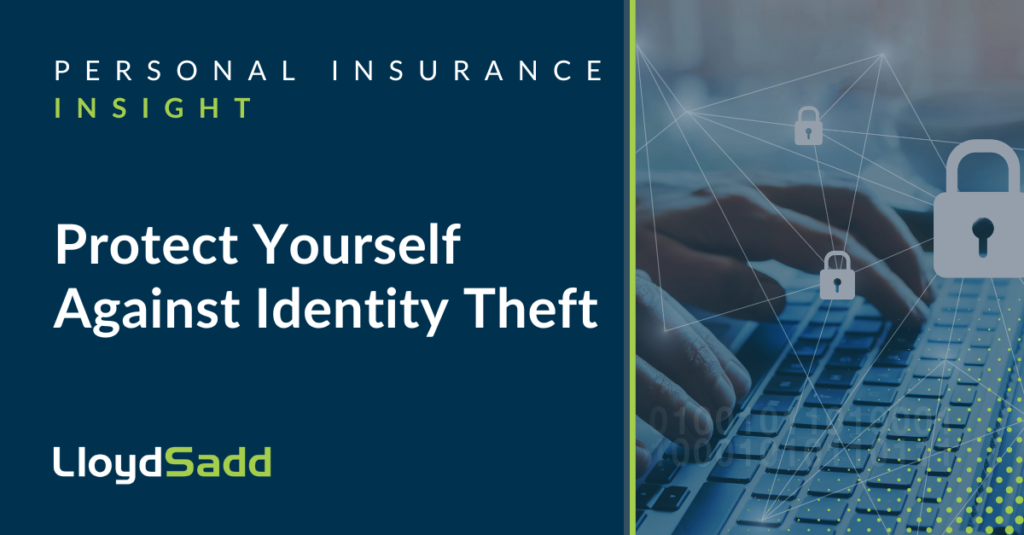Protect Yourself Against Identity Theft

Many people fall victim to identity theft each year. And, just as alarming, hackers are becoming more sophisticated in their efforts.
The news isn’t all scary. There are steps you can take to protect yourself from becoming a victim.
1. Prevent Identity Theft with Low-Tech Strategies
When most individuals think of identity theft, they think of criminals opening new credit cards, taking out loans and running up thousands of dollars in debt. Fortunately, that’s usually not the case.
The U.S. Department of Justice has found that the most common type of identity theft is someone stealing and using your credit or debit card to make unauthorized purchases. This is also true for Canadians, as confirmed by several provincial studies.
The good news is that you are probably already protected from many of those charges. Credit card companies and banks have policies so that you are not on the hook for fraudulent charges.
Still, you can help prevent it from happening in the first place:
- Never share your Social Insurance Number — Always keep this information locked up at home.
- Keep financial documents secure —Lock bank statements and tax returns in a filing cabinet or safe.
- Keep personal information personal —Avoid posting your birthdate, mother’s maiden name or other commonly used security questions like the name of your first pet online. Hackers have learned to mine social media for these details, allowing them to bypass security questions and access accounts.
- Sign up for fraudulent alert emails from your bank or credit card company.
- Call your bank or credit card company immediately if you notice any suspicious activity.
2. Protect Your Identity with Online Security Best Practices
We pay bills online. We connect with friends, family and colleagues through social media, chat applications and email. Smart homes follow our instructions to turn on lights, change the temperature and much more. We can even order groceries online.
This reliance on technology has made it easier to go about our daily lives. But it also makes it easier for hackers to access passwords, online accounts and financial information. Keep your online information safe to prevent identity theft with these simple rules:
- Never click on links in emails — Phishing emails look like they are sent by a reputable source (e.g., your bank, the electric company, a credit card company, etc.). Instead of clicking through these emails to pay a bill or check your account, open a new browser and type in the web address you need to visit. This can help protect you from sharing online account information.
- Use different passwords — It’s tempting to use the same password for sites you regularly access. After all, keeping track of all those passwords isn’t easy. Instead, use different passwords for every site. Keep track of them using Google Docs or a password application designed to help you store these codes securely.
- Make your passwords STRONG — Resist the urge to use phrases, names or dates that have significance to you. These may be easier to remember, but they’re also easier for a hacker to crack. Try using a combination of letters, symbols and numbers. Come up with a phrase that spells out your password. For example, “I Love To Always eat cookies and milk!” can become “IL2Aecam!”
- Change your password often — Just when you remember your password, it’s time to change it. Passwords should be changed at least once a year; twice a year would be even better.
3. Monitor Your Credit Regularly
Another important way to prevent identity theft is by paying attention to your financial documents. Quickly notifying financial institutions of any suspicious activity can prevent criminals from running up charges or accessing confidential information across multiple organizations.
- Check your bank accounts — Look over debit and credit charges at least once a week. This constant vigilance can help you identify fraudulent charges and stop criminals from continuing to use your cards.
- Request your free credit report every six months — Two credit bureaus monitor consumer credit reports: Equifax Canada and TransUnion Canada. Stagger your requests between each bureau every six months so you can monitor your credit throughout the year. The free credit report includes your credit score (which includes credit card accounts, loans and financial information) and any new loans or credit cards opened. This helps you identify any fraudulent activity in your name.
4. Be Proactive
Consumers can help protect themselves from identity theft by putting a few safeguards in place.
- Identity theft protection products — These products monitor your credit and notify you of any suspicious activity. Often, they can overlap with services provided through bank accounts and credit cards. Be sure to research which products are right for your needs.
- Freeze your credit reports — This prevents anyone from looking at your credit report and opening a new account in your name. Financial institutions you already work with are still able to check your credit.
- Fraud alerts — These notifications can freeze all activity on your credit report for 90 days. It is an excellent first step if you notice any fraudulent activity on your accounts or if your purse or wallet is stolen.
Identity theft can pose a serious threat to your financial (and mental) health. No matter where you bank or shop online, it’s always a good bet to follow best practices so you don’t become a victim of identity theft.
To download this insight, click here